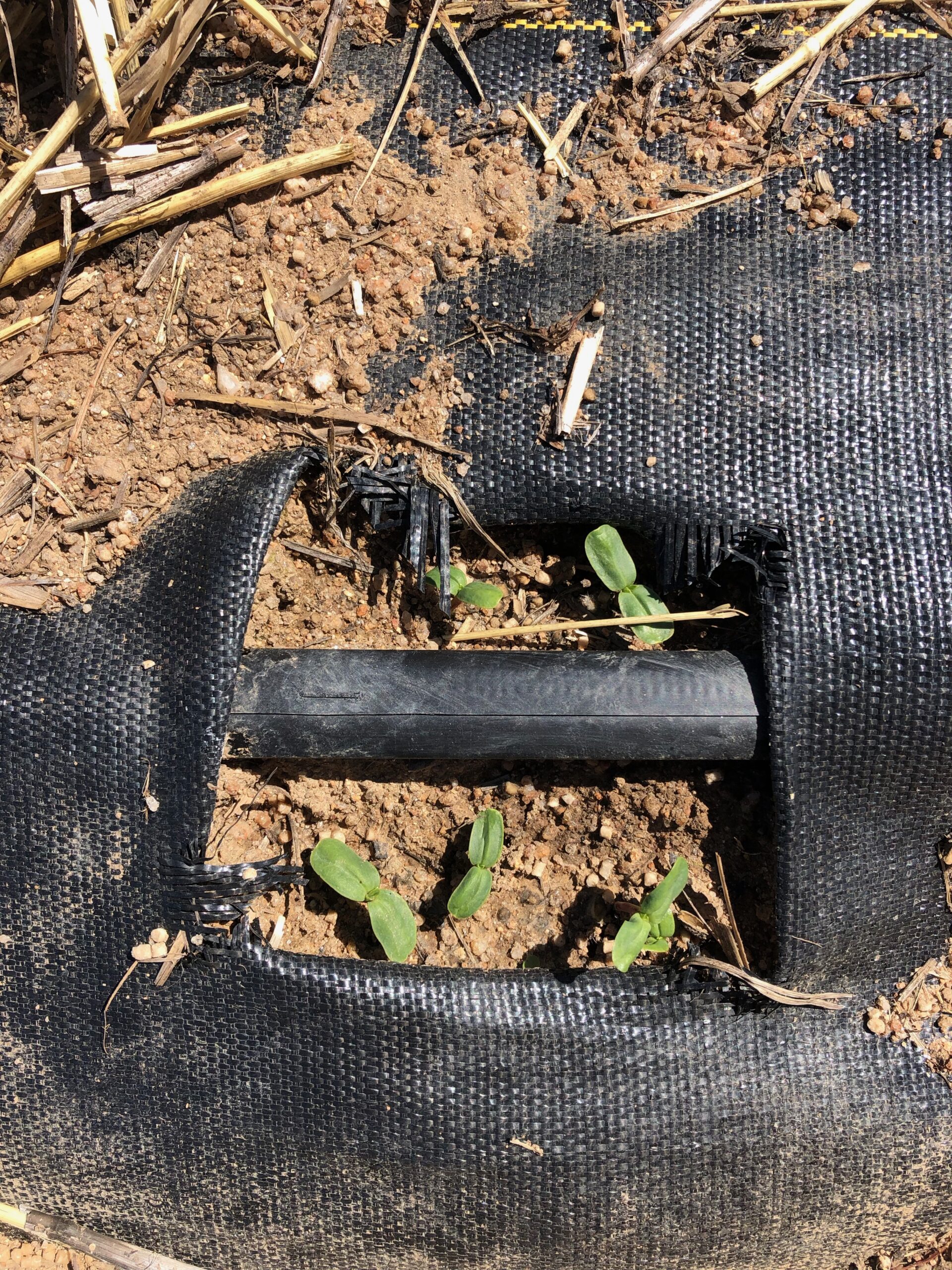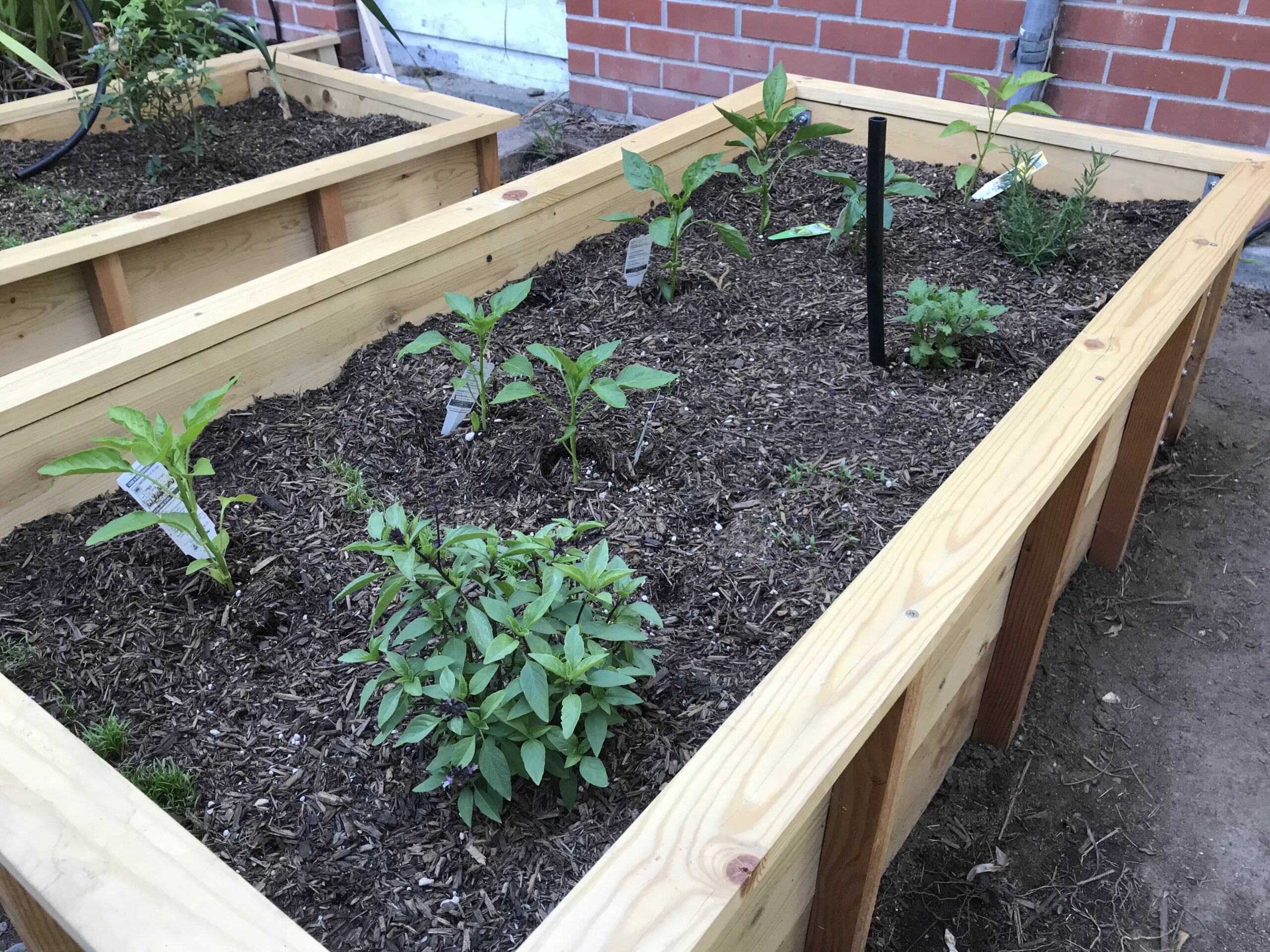A Season in Our Gardens – Bring on the Heat!
Contributed by Tim Johnson
Contributed by Luke Matthews
Contributed by Paul Buttner
This week will see the second extreme in the temperature whipsaw of Spring. Within a week high temperatures will swing over 30 degrees! Tough on people and tough on plants. As tempted as you are, don’t overwater. Farmers know that over irrigation is one sure way to mess up a crop. Weak root systems and disease problems are the sure result.
Large Rural Garden – Tim Johnson, CEO
Rain and clouds made it seem closer to March than May just last week. Now we are near 100 here in the Sierra Foothills. It’s a tough time for gardens and there is a temptation to over water.
This week I will rely on my mulch to keep soil temperatures lower. The straw and landscape cloth will keep the roots of the plants cool and keep the water from evaporating.

I will also lean on my drip system. Drip irrigation saves you water. Use individual drippers or drip tape right next to the plants. Water is delivered right where it is needed and slowly enough to work its way down to the roots. Any good garden center or nursery can get you set up.

The best way to determine soil moisture is to stick a finger in the soil next to a plant. If it’s wet, wait a day. If it’s moist, wait a day. If it’s dry irrigate. Each irrigation will only be for 30 minutes, so that the water just hits the roots zone. Be sure to keep the top of the soil wet for seeds and seeds that have just emerged. That is best done with a watering can, rather than turn the whole system on.
Diverse Urban Garden – Luke Mathews, Wildlife Program Manager
Irrigation is very important in the summer but depending on how you choose to manage the process it can either become fairly time consuming or can require significant startup costs. I have always utilized sprinklers for my garden irrigation needs, specifically oscillating sled sprinklers. These sprinklers work well with large rectangular shaped garden plots and you can adjust water pressure to minimize overspray and reduce water use. While this is not the most efficient water use system, I have really grown to like it due to its simplicity, cost effectiveness, and ease of use.

When using sprinkler systems, it is very important to consider the time of day before turning them on. Although you can water your plants at any time of day, I believe that early mornings are the best. Watering in the early morning takes advantage of cool morning temperatures, which reduces evaporation and allows more water to soak into the soil. Furthermore, by irrigating in the morning your garden plants will have moisture to draw from as the day heats up. While late afternoon or evening irrigations are another option you can run into problems if the plants are unable to dry out before nightfall. Wet leaves can result in fungus issues and can encourage nocturnal pests such as slugs.
New Garden – Paul Buttner, Environmental Affairs Manager

I’m still finishing my beds and getting my plants in, so the irrigation system is still in about a million or so parts from Home Depot. It is a second-tier priority right now since I can water by hand while finishing construction of all my remaining beds. The part I do have all installed, as part of my bed construction, is the main black supply tubing. These tubes all enter each bed from underground. I’ve buried all of these lines leading to the boxes for a nice clean look around all the beds. Right now, they are just sticking up out of each bed like those big utility lines that are positioned in front of a new housing complex being built—just anxiously waiting to connected to the new houses.

My system will be fairly simple with a programmable, electronic hose end timer made by Rain Bird. Actually, all my parts are made by Rain Bird which include a seemingly endless inventory of drippers, sprayers, flow regulators, pressure regulators, tee fittings and couplers. Yikes, that’s a lot of parts! Will be fun to figure out how they all go together while I temporarily keep my plants on life support with daily watering. With raised beds, generally you want more frequent watering at shorter intervals—easy with my programmable timer but a lot harder before I actually get the dang things installed and up and running.
